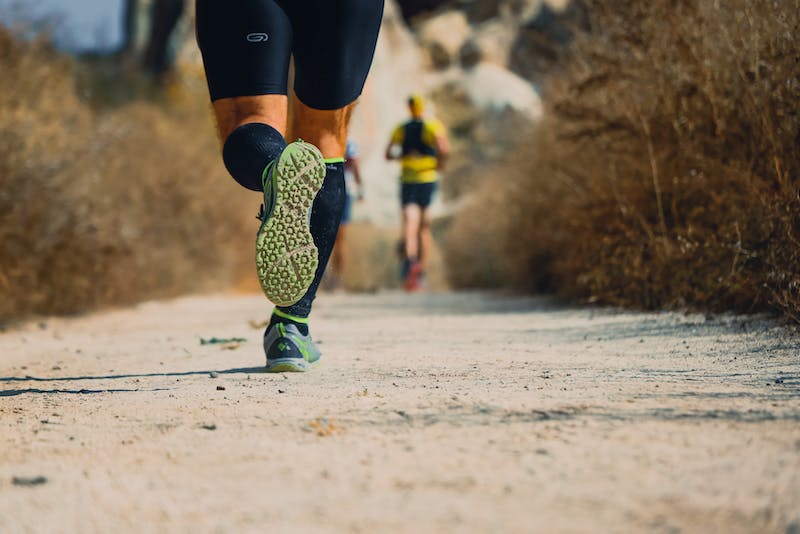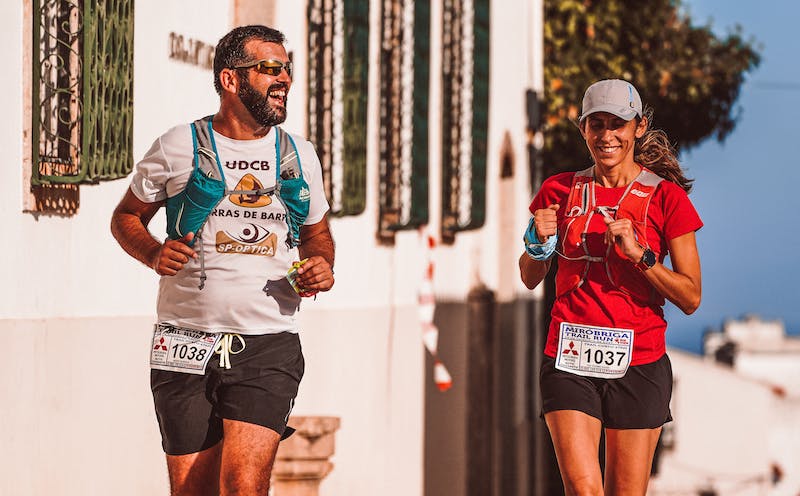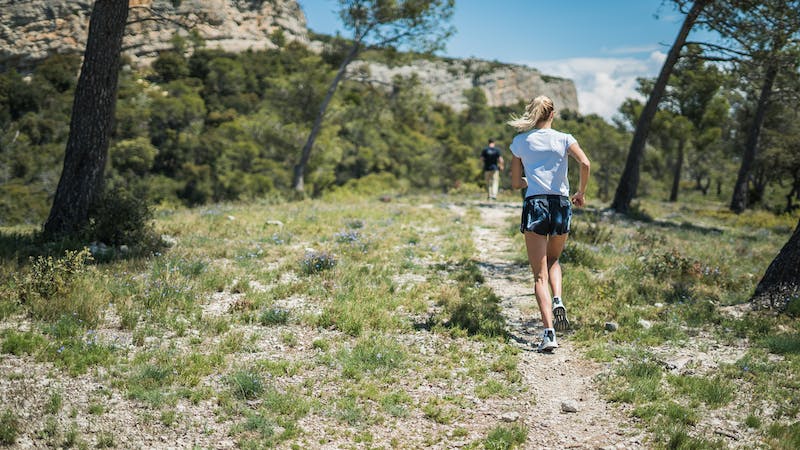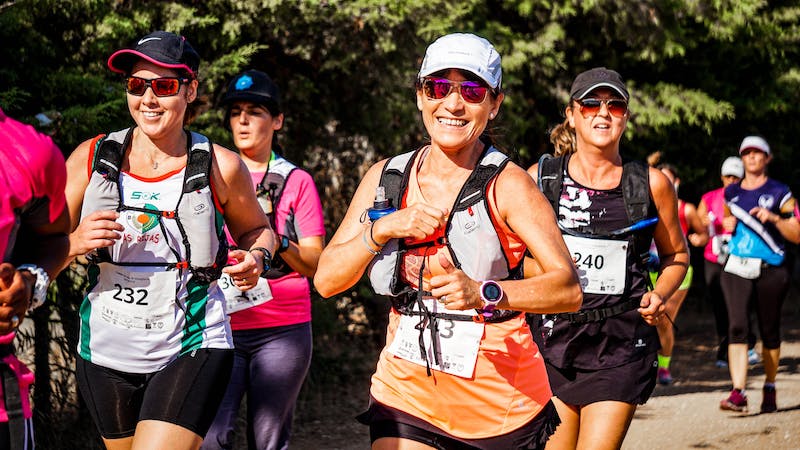Suite 3, Ground Floor, The Gateway,
312 St Kilda Road, Southbank, VIC, 3006
Trail vs. Road running: Tips to help you prepare for the trails.

Dr Brea Kunstler (Physiotherapist and Run Coach)
Not all types of running is created equally.
About 5 years ago I made a series of mistakes that made my first trail run my worst run ever. I still remember that day like it was yesterday. It was a truly horrible experience.
Firstly, I had to drive 1.5hrs to get to the event, which just stuffed up my whole pre-race routine. I hate travelling far for races. I stupidly ate a bowl of bran with yoghurt before I started the drive, thinking that I’d have my carby bananas when I got there and be fuelled and ready to go like I usually am. That bowl of bran stayed we me the entire run and made me feel utterly miserable.
Secondly, I had no appreciation for what I had actually signed up for. I didn’t think I’d need to do anything different to run 35km on a rail trail compared to the road. I was wrong. I was a city runner suddenly needing to run on a dirt track for 35km with no crowd to cheer me on and wearing completely unsuitable shoes.
I received my first and only ‘did not finish’ that day.
So, with the benefit of hindsight (and additional education), here are some ways that road and trail running differs and what that means for your training.
Tips to help you prepare for running trails:

1. The surface is different
Running on the roads is just that, you’re running on a made surface and unlikely to come across much elevation or many obstacles. Running on the trails involves elevation, and (often) lots of it! It also involves running on narrow, unmade/dirt paths that can have random rocks, branches, roots, animals and slippery parts that come out of nowhere. The unpredictability of the surface is so much greater in trail running and requires preparation.
Training implications:
A. Research the event in detail.
- Understand the terrain and get an idea of what the weather might be like (e.g. wet and cold or hot and dry). Try and train on a similar surface with similar elevation (if not on the actual track) at least once a fortnight in the months leading up to the event.
B. Wear appropriate trail footwear
- Trail running shoes tend to provide more grip and ankle support compared to conventional road running shoes, which can be valuable in slippery and unpredictable conditions.
C. Prepare your body for surprises by training “unpredictably”
- Agility and plyometric training is needed to prepare for dodging random roots and rocks. You might do this type of training in a stand-alone session (e.g. skipping and agility drills in a strength session) and/or include it in running sessions (e.g. do 6 “zig zags” every 2 min and leap over random sticks on the ground every 5 min).

2. The length of the event can be different
Trail runs can be seriously long! They can range from as short as 5km to over 160km (“100 milers”). Also, the amount of time it takes you to run a certain distance in the trails might be twice as long as it would take on the road. These huge events often mean that there’s less food and water stations as they might simply be impractical to set up or the organising committee might be primarily volunteers from the local community who don’t have heaps of resources.
Training implications:
A. Get the right gear
- Researching the event well in advance will help you here too. You will need to buy new gear (yay!) like a hydration pack (particularly for the longer runs and especially if aid stations are few and far between) and those fancy trail shoes I mentioned earlier.
B. Be safe
- Carry a map, first aid kit, fully charged phone and make sure people know where you are and where you expect to be at any given time during the day. It’s easy to get lost and hard to find you in dense bushland!
C. You need to carry more stuff
- Long runs mean that you might be running in rail, hail, shine, cold, hot, sunny, cloudy, dark and light conditions all within the one run. So, you’ll need to carry water (in your new hydration pack!), fuel (go light on the packaging so you don’t need to carry rubbish) and protective gear like a hat, sunscreen, bug spray, fluro vest and head lamp. Think of it as being similar to going on a hike.

3. The elevation can be different
Trail runs are often held in the hills where you get to experience some beautiful scenery away from the concrete jungle most of us spend our time in. So, you need to expect to be going up and down hills much more often when doing a trail run compared to a road run. This might mean that you are walking just as much as you are running.
Training implications:
A. Run on the hillier side of town
- Many road runners train hills to gain power in their legs. However, I reckon most don’t. So, any road runner might need to find somewhere in their current program to integrate some hills training. This can be as simple as taking the hillier route on one of your long runs each week, or be more complex and involve hill sprints during an interval session.
B. Time to get strong!
- But it’s not just about running hills, it’s also about strengthening the muscles in charge of pushing you up the hills and supporting you back down. Make sure you integrate some single leg exercises, like single leg weighted calf raises on the flat and off a step.
Add some stepping activities to your session (or try a step class at the gym) when you are literally ascending and descending stairs at different (safe!) speeds. This doesn’t just train strength but will also help to develop coordination. And talking about coordination, the little muscles surrounding our joints often get neglected when we do strength activities but they are responsible for keeping our movements coordinated and preventing falls on the trails. Consider using a mini-trampoline or pillow to do gentle ankle mobility and balance exercises.
C. Learn how to run up and down hills
- Sounds simple, right? Well not really, there is some skill involved in safely navigating hills on trails (e.g. using short and cautious steps, where you keep your feet under your centre of mass, to avoid gravel rash on your face at the end of the race). Feel like you’re really lacking skill in this area? Investing in some climbing poles might help to take some weight off the legs and support your balance.
D. Don’t train to run the whole distance
- Your long run training sessions for a trail run will likely be nowhere near the actual length of the race. This is because you are unlikely to be running the entire race because you’ll be walking up or down a steep hill, negotiating a complicated climb or simply stopping to enjoy the scenery. Instead of training to run the whole distance, use that additional time to get some hills training in.

4. Your approach to nutrition might have to change
Trail runs can be really long and lack frequent food and water stations. So you need to prepare for this in advance!
Training implications:
A. Love carbs…and probably fats too
- Carbs are an endurance athlete’s best friend. Your body needs carbs in daily meals to fuel high intensity exercise and should be consumed within-race too if it’s long duration (e.g. half marathon).
Your body draws on fats too for fuel, especially if the long duration exercise isn’t hugely intense or is a mix of high and low intensity efforts (e.g. trail run). So, make sure you chat with an accredited sports dietician to make sure you are eating the right way to fuel your body, ensuring it’s ready to do what you need it to do.
B. Practice your pre-race and within-race nutrition beforehand
- Remember my story from before? Where what I had for breakfast stayed with me for the entire run? It’s an uncomfortable feeling! So, don’t change your fuelling plan on the day of the event and make sure you have practiced your plan well in advance to avoid needing a bush toilet on the day.
You need to carry food on long trail runs. That food should be energy dense, light to carry and easy to digest. Some people like gels, others go for lollies or dried fruit, others prefer liquids. Try something and practice with it on several training runs before the day so you know what works for you and what you are able to carry on board. Oh and find something with minimal packaging so you don’t need to carry too much rubbish! Don’t expect there to be bins on the course or someone there to clean up after you.

That’s it!
There are heaps of things that make road and trail running different. But, at the end of the day, they still have one thing in common, running! Have fun doing something different that takes you out of your comfort zone. Take your time on the course and enjoy the experience by talking to people (those who aren’t pushing for their next PB) and looking at the beautiful flora and fauna. You’ll get some great stories and photos to share with your colleagues during your “water cooler” chats once you’re back in the big smoke.
Need some help achieving your running goals? Book a FREE 10 minute telehealth appointment with Performance Medicine’s run coach and physio, Dr Brea Kunstler, to see how she can help you. There are several in-person and telehealth coaching options available to suit your needs!

